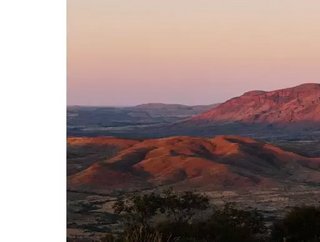Rising commodity prices spur Rio Tinto and BHP in 2020

Rising iron ore and copper prices spurred mining giants Rio Tinto and BHP to record strong results for 2020 despite the global socio-economic challenges arising from the COVID-19 pandemic.
Rio Tinto delivered an underlying EBITDA of $23.9 billion last year, up 13% on the prior year and comfortably ahead of the consensus $23.2bn.
In the half-year ending December 31, BHP recorded operational profit of S$9.8 billion, up 17%, and underlying EBITDA of $14.7 billion at a margin of 59%.
BHP Chief Executive Officer, Mike Henry, said its continued delivery of reliable operational performance during the half supported record production at Western Australia Iron Ore and record concentrator throughput at Escondida.
"Our operations generated robust cash flows, return on capital employed increased to 24 per cent and our balance sheet remains strong with net debt at the bottom of our target range. The Board has announced a record half year dividend of $1.01 per share, bringing BHP’s shareholder returns to more than $30 billion over the past three years.
"We further grew value in the business during the half through achieving first production at the Spence Growth Option and through the acquisition of an additional interest in Shenzi. Our other major projects in iron ore, petroleum and potash are progressing to schedule."
Last September, BHP signed a renewable power purchasing agreement (PPA) to meet half of its electricity needs across its Queensland Coal mines from low emissions sources, including solar and wind. The agreement will help BHP reduce emissions from electricity use in its Queensland operations by 50 per cent by 2025, based on 2020 levels.
Rio Tinto prospers but Capex creeping up
Rio Tinto Chief Executive Jakob Stausholm said it had been an extraordinary year although its successful response to the COVID-19 pandemic and strong safety performance were overshadowed by the tragic events at the Juukan Gorge "which should never have happened". The Board has approved a total dividend of 557 US cents per share including a special dividend of 93 US cents per share.
"Safe and well-run operations, together with world-class assets, great people, capital discipline and a strong balance sheet, leave Rio Tinto well placed to generate superior returns for shareholders, invest in sustaining and growing our portfolio, and make a broader contribution to society," he said.
Yesterday it was announced a strategic review by Aluchemie owners Rio Tinto and Hydro determined it is not viable to make the ongoing investments needed to continue operating the stand-alone anode production facility in Rotterdam "due to its weak competitive position and challenging market conditions".
Peter McNally, Global Sector Lead for Industrials, Materials & Energy at Third Bridge, described Rio Tinto's year-end 2020 results as "solid" and that the two key themes from results week were free cash flow and commodity prices.
"Higher commodity prices were key to their results, and this helped the company overcome some lower output levels," he said. "The big factor for Rio Tinto has been iron ore, which has allowed the company to deliver US$9.4bn in free cash flow, the highest figure of the past decade. Management signalled its confidence with a strong dividend. While those results are positive takeaways, our experts point out that future Capex is creeping higher, moving up by $500m to $7.5bn for 2021 and 2022."
"As long as iron ore prices are sustained and Rio Tinto can deliver their volumes in a safe operating environment, their financial outlook remains healthy. New management continues to express regret for the destruction of the rock shelters at Juukan Gorge and is implementing action plans for more sustainable mining activities."
BHP and Rio Tinto are more dependent on the fortunes of the iron market than any other, he added.
"Market conditions have tightened since the tailings dam tragedy in Brazil in early 2019, and while demand from Chinese steel customers was strong in 2020, BHP noted that the momentum in the rest of the world has been picking up markedly after a steep drop related to pre-COVID," said McNally.
"In fact, steel producer utilization rates are now close to pre-COVID levels, which is driving demand for iron ore. Capex is rising to meet rising demand at both BHP and Rio Tinto, but BHP won't see an immediate response in production volumes to meet market needs, particularly as companies in Australia have increased focus on their environmental impact. While BHP's investment capital is rising, so too are returns to shareholders with increased dividend payments."






